Off-Road Ice Cream Truck 🍦🤤🍨
Team Members: Adam (1st grade), Eros (1st grade), Devin (1st grade)

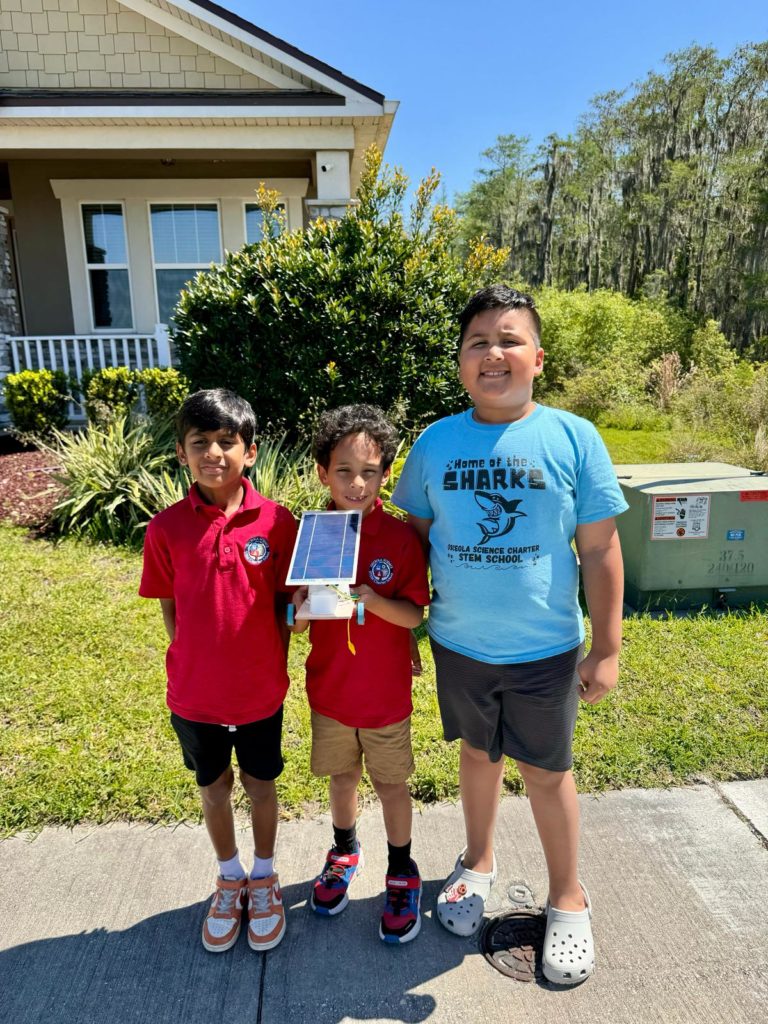
Materials
We started by gathering all the materials needed for the project. Here is a list of the materials used to create our car:
- Wood piece for the base.
- Recycled ice cream cup used for the main structure. This was glued to the wood base.
- Ice cream color foam to decorate and Pipe cleaners as sprinkles
- Half styrofoam cup for placing the bunny (passenger) inside
- DC motor
- Batteries
- Color code cables for the circuit
- 4 Wheels, Axle, and straw pieces to help move the car.
- 4 rubber bands to surround the wheels.
- Hot silicon
- A ball head over the icecream cup to give mobility and stability
- Solar panel
Specifications
L=23 cm W= 14.2 cm H=13 cm
Weight: Car weight 362.8 Grams
Gear specs are 40T:10
Description
Our team had an exciting and challenging time building a solar car for this competition.
In the first stage of our project construction, we chose an Ice Cream cup due to its appropriate shape and size as the foundation structure for our solar car. We attached a D-type ball head with liquid silicone to the solar panel and cup to ensure the car’s stability and durability. This decision allowed us to adjust the solar panel’s angle based on the sun’s position during the competition.



During our discussion, we explored the possibility of using larger and thicker wheels for the car. We managed to obtain new wheels but to use them; we had to place the wheels from the kit inside the new ones. Unfortunately, this caused the car to become unstable, so we could not use the new wheels.

We designed a compartment using a Styrofoam cup to house a ping pong ball, symbolizing the vehicle’s passenger. This decision added a playful and visually appealing element to the car’s overall design.
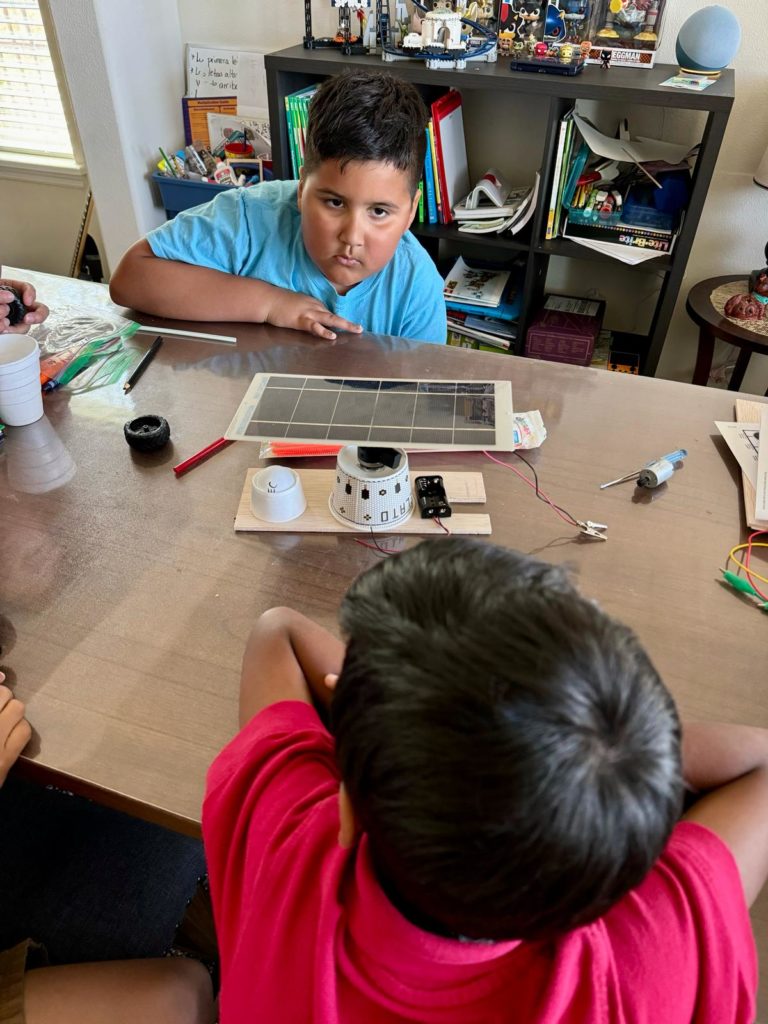
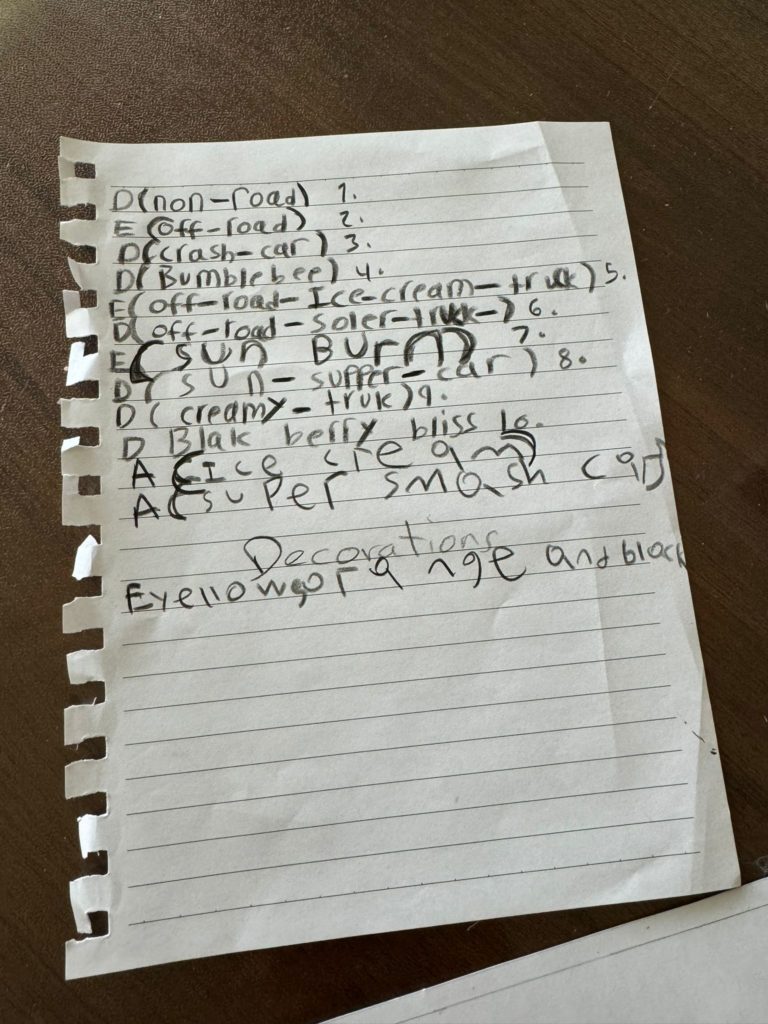
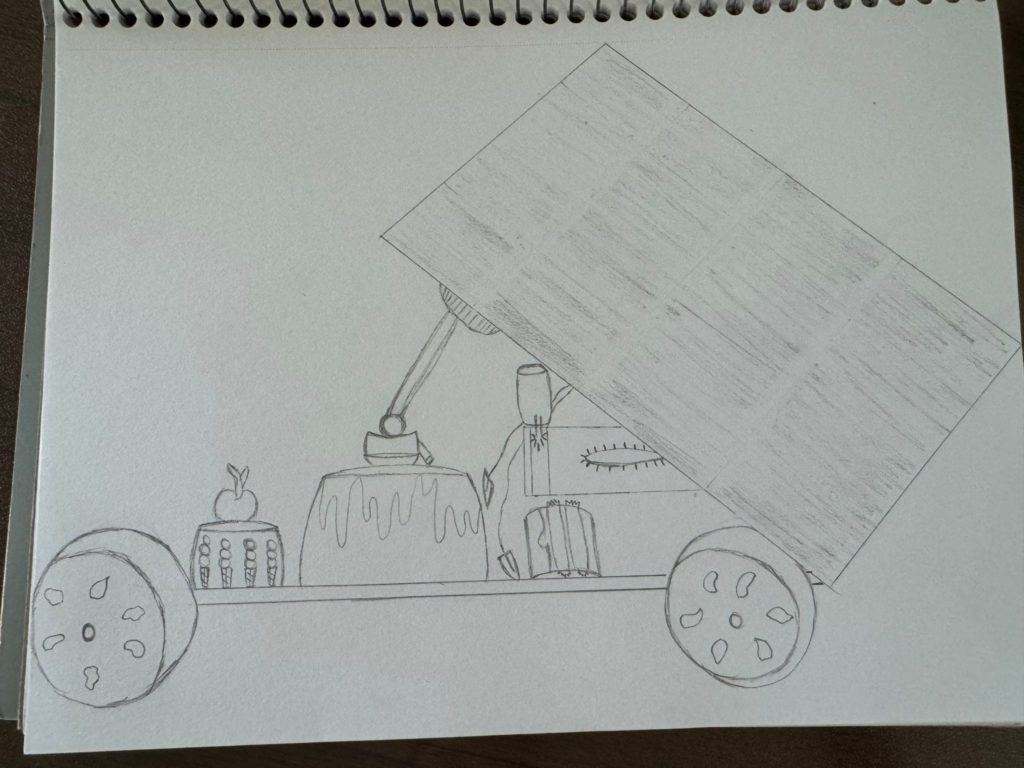
We were trying to find a way to give our car a more ice cream-themed look. We asked our moms to print a waffle cone pattern to achieve this. We then used an extra ice cream cup to cut the shape and decorate the design. Initially, we thought of adding an ice cream truck on both sides of the car, but we decided against it because it would be difficult to adjust the solar panel if needed due to the sun.





To complete the ice cream theme, we painted the wooden base of the car to resemble strawberry ice cream and added sprinkles-shaped decorations (pipe cleaners) for a more attractive and realistic appearance. We decorated the passenger seat (half-styrofoam cup) with small ice cream cones and painted the passenger as a cherry.
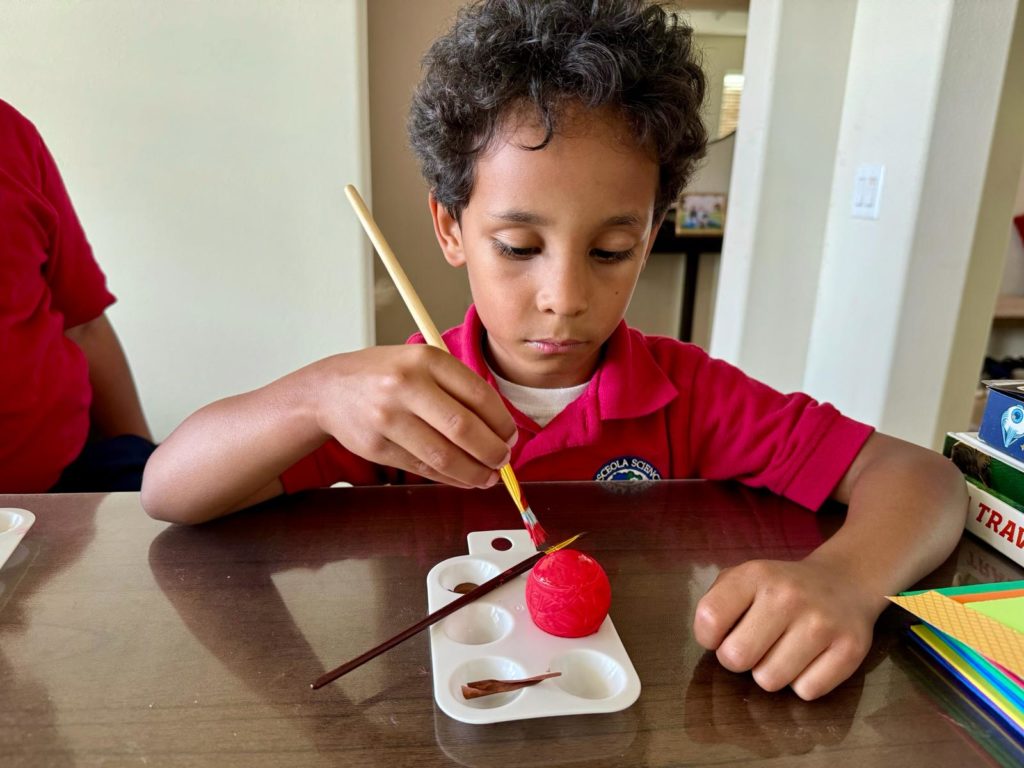
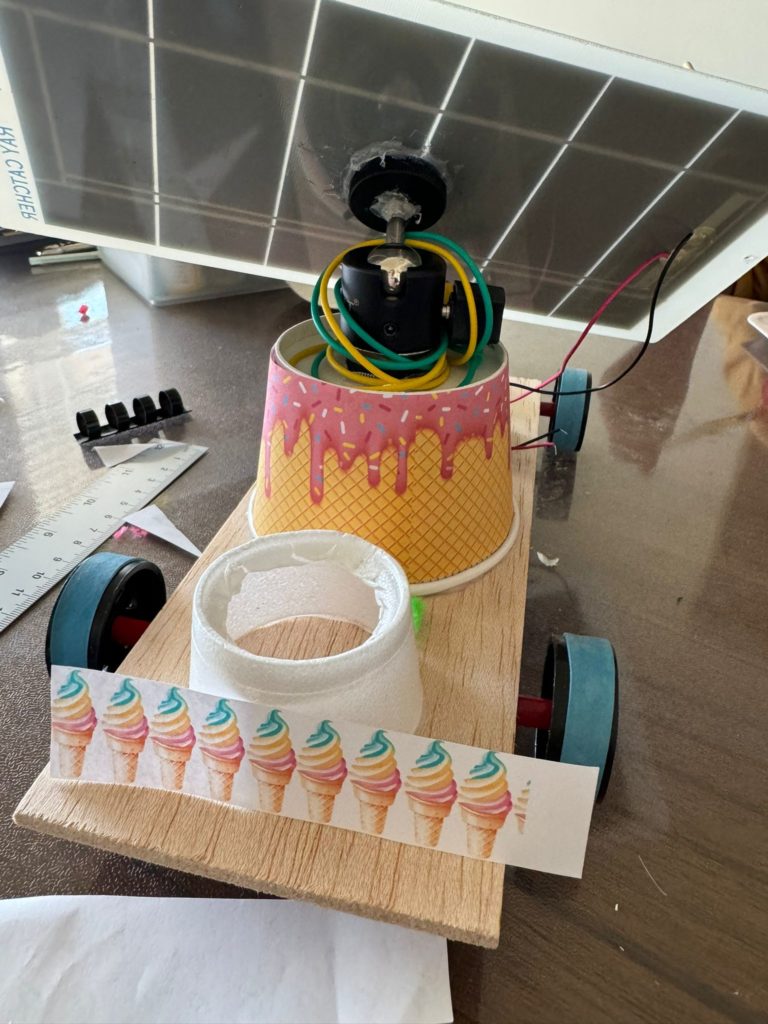
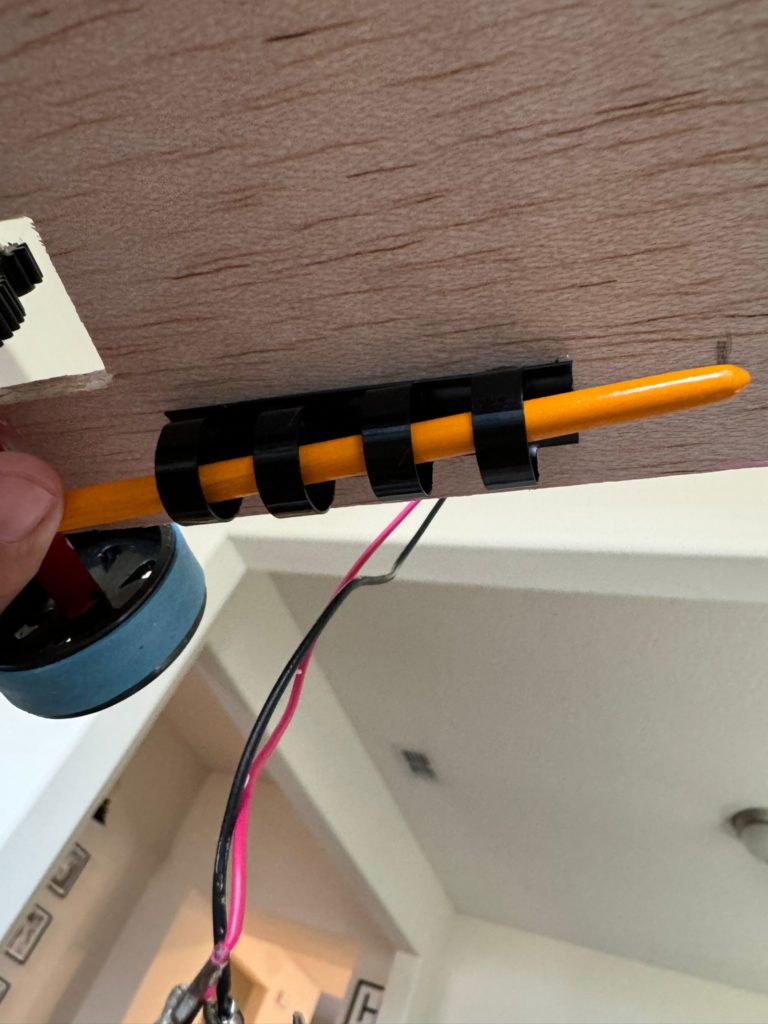
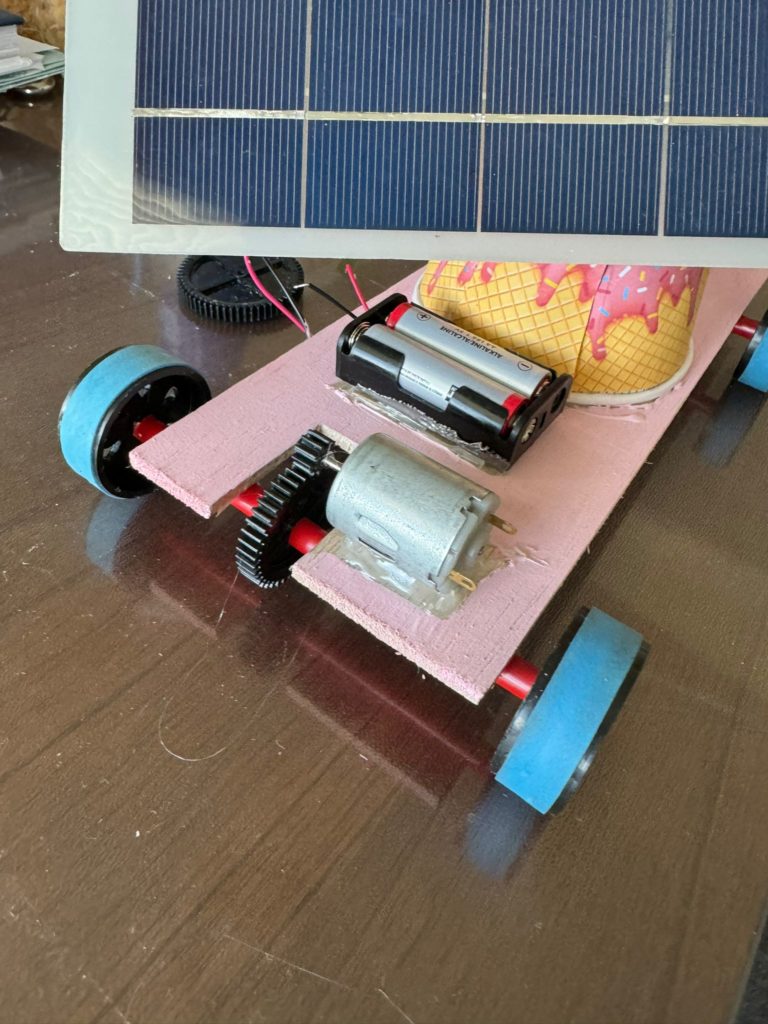
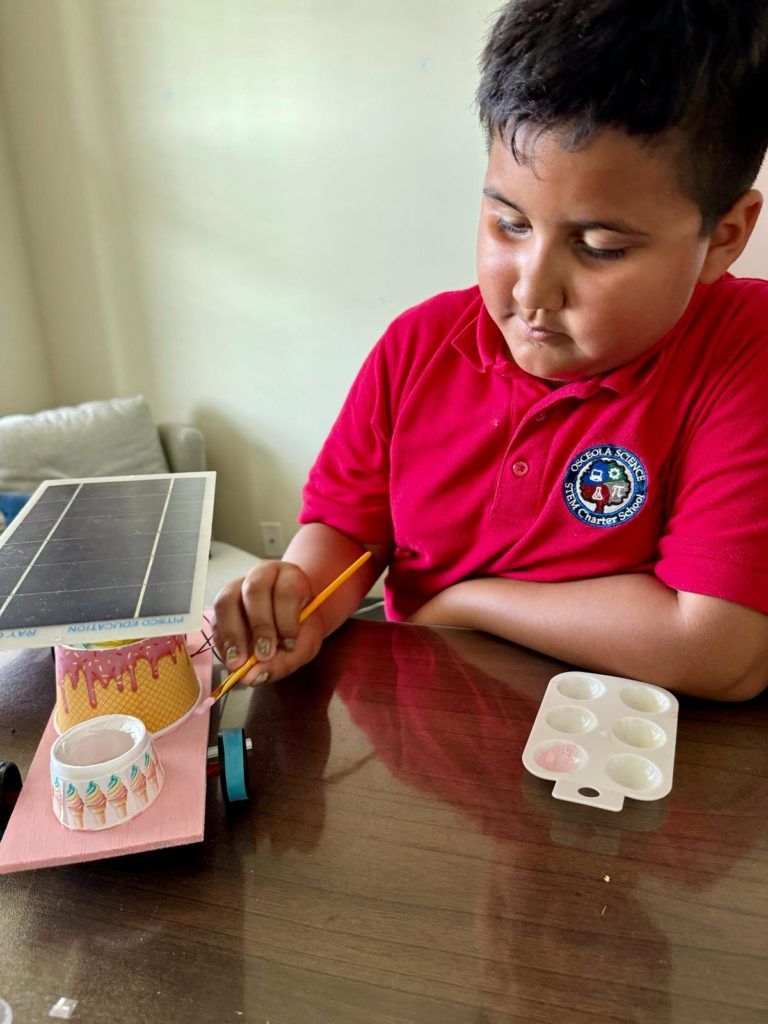
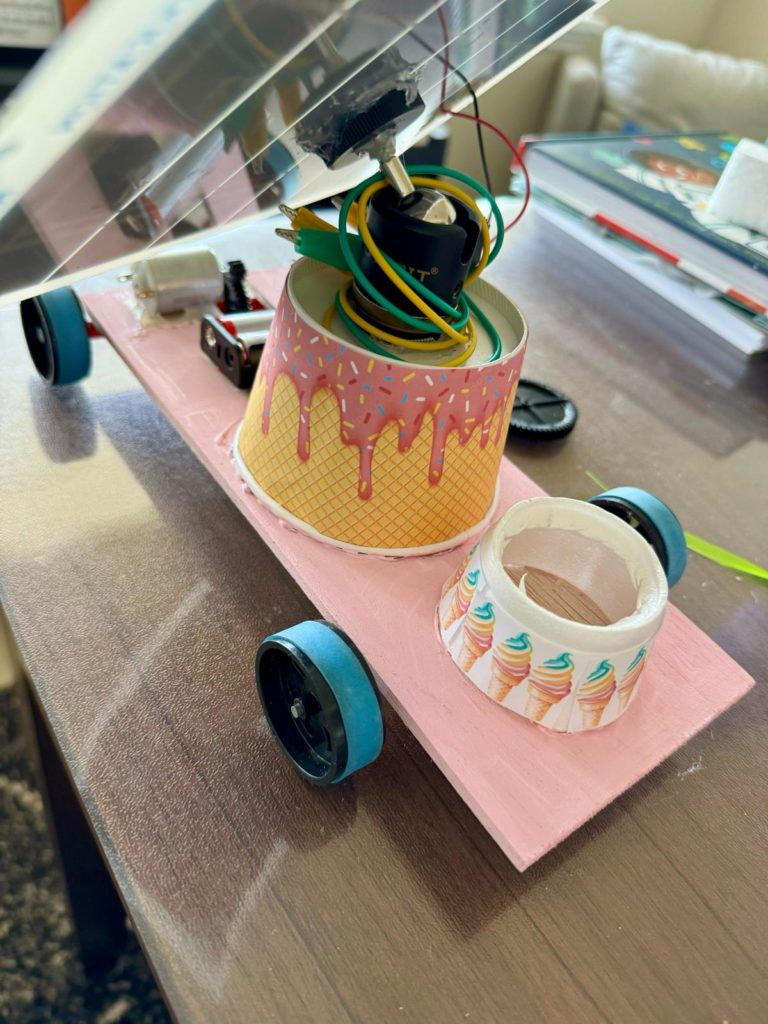

Building a solar car was challenging and enjoyable. We learned about materials and their applications, creating a functional and visually appealing vehicle. We’re grateful for the experience and knowledge gained.
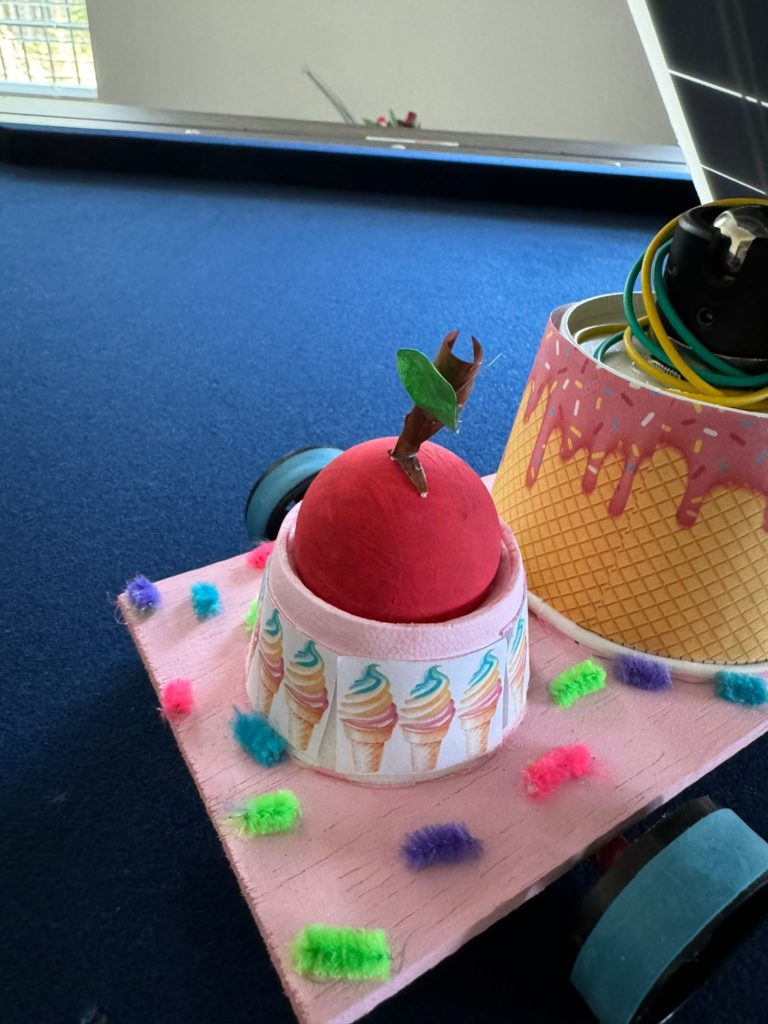
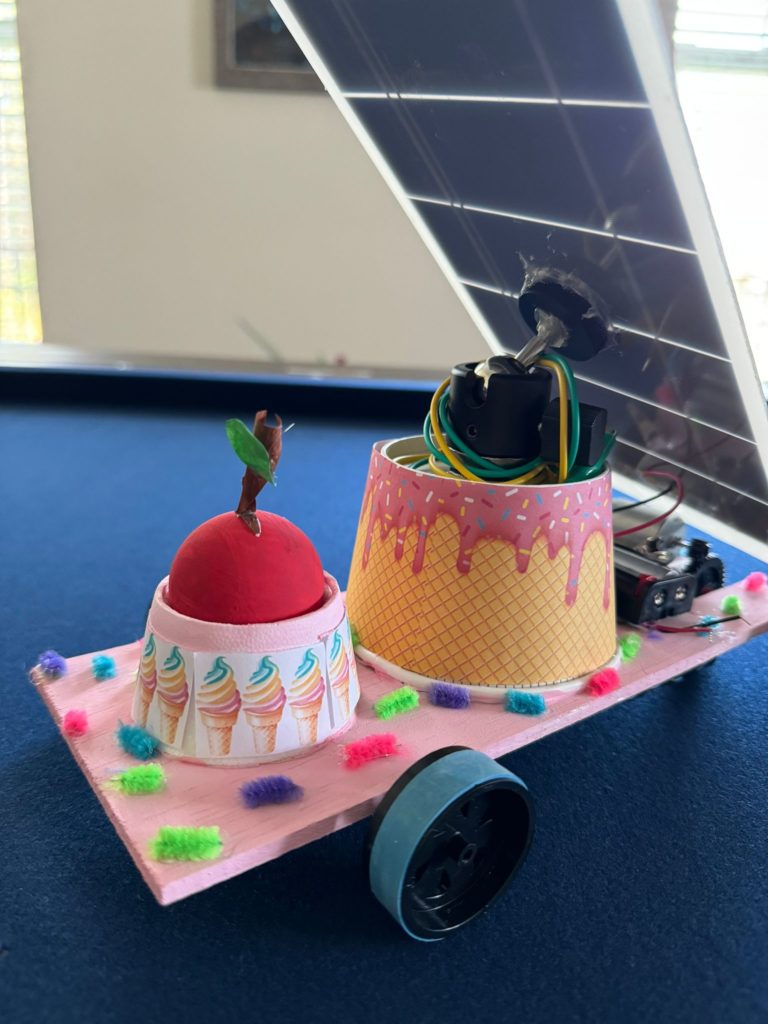
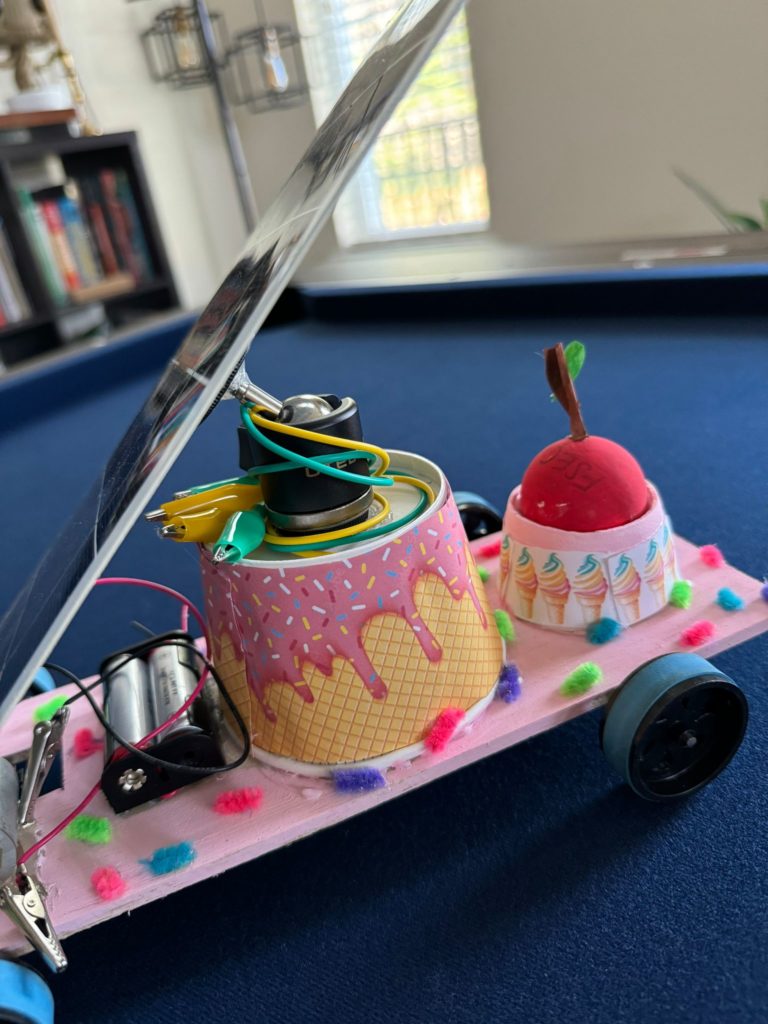
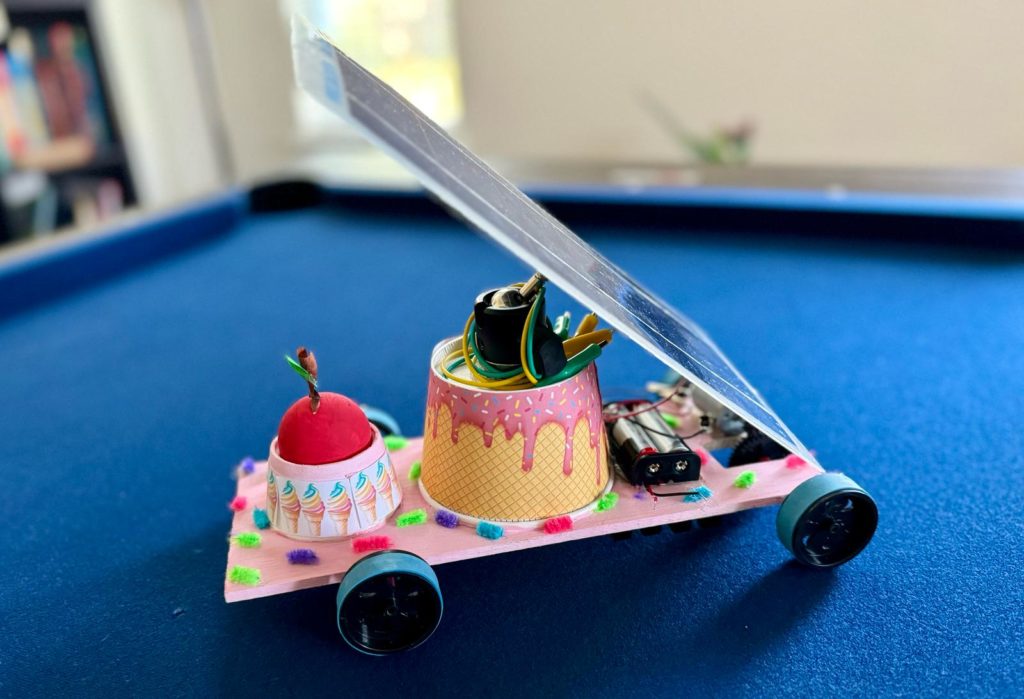
Testing
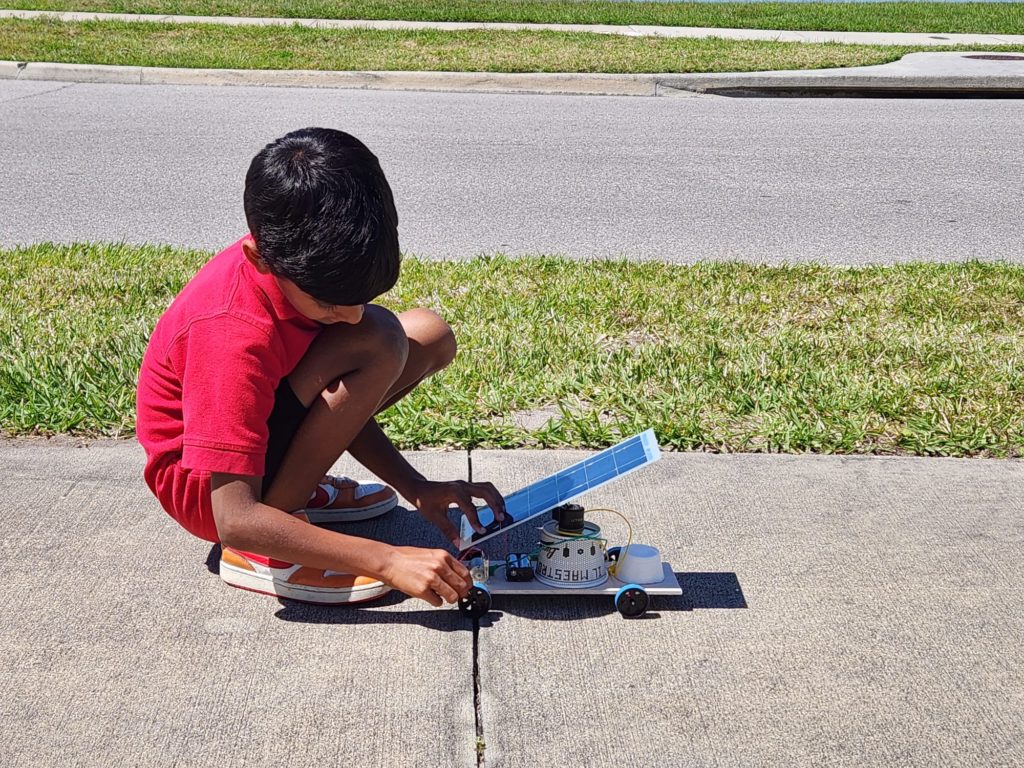
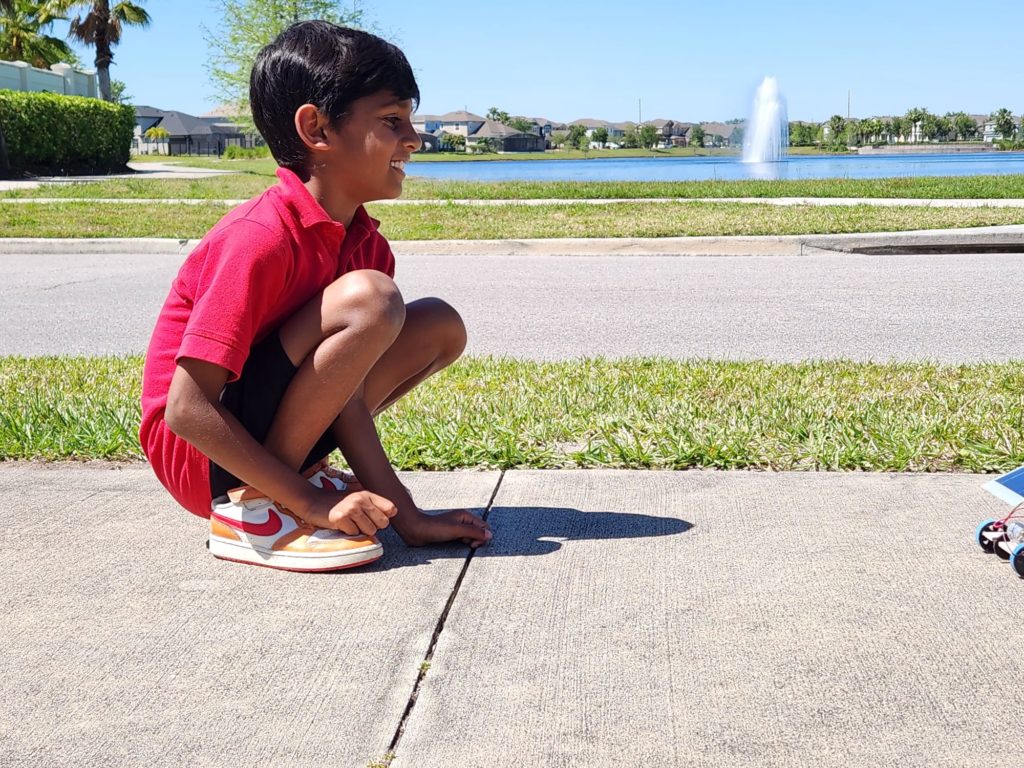

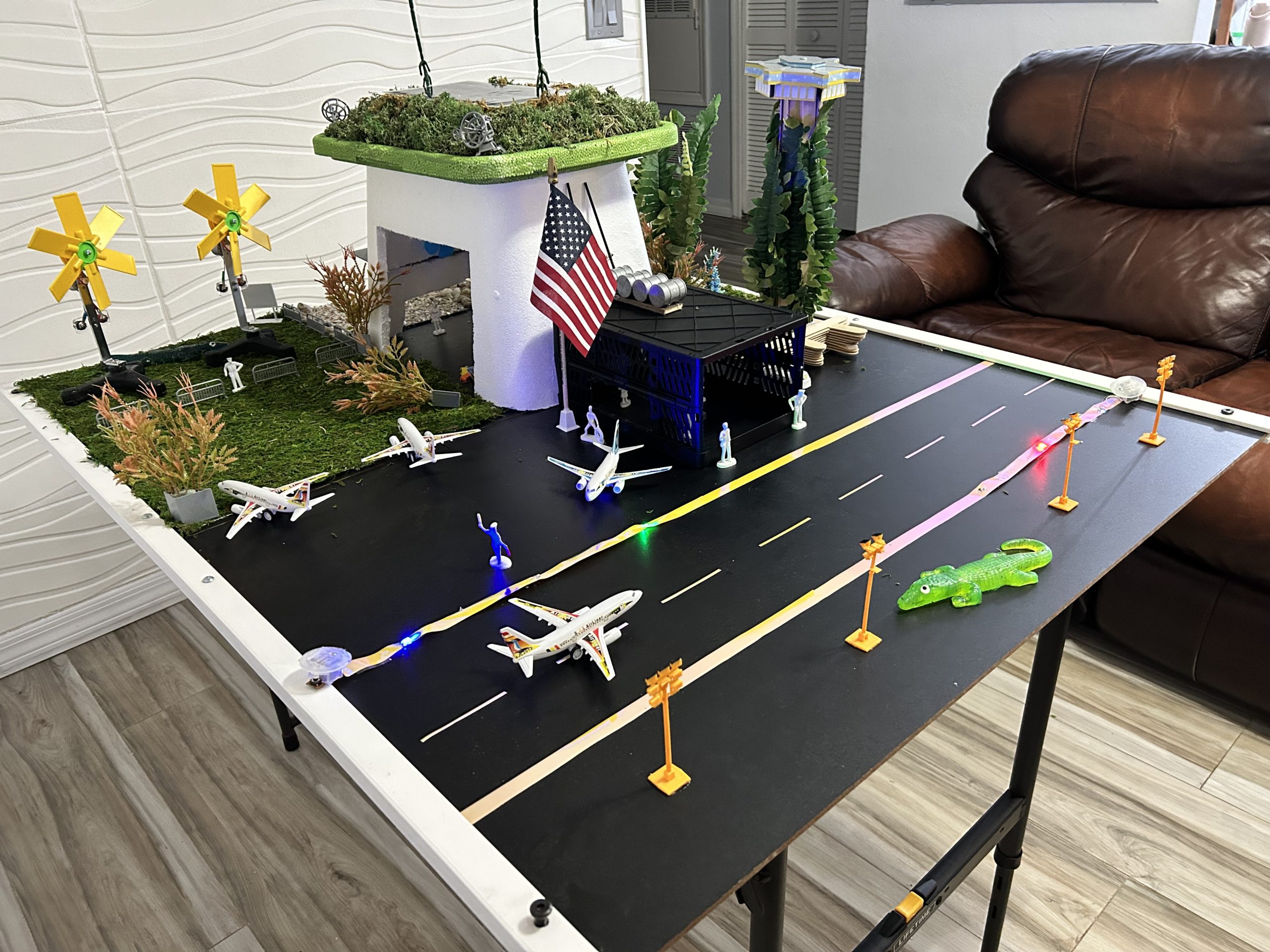
This is not your first solar race and you can certainly tell! Great job working as a team and creating a light-weight car that raced and did very well at home and in person. I am proud of all of you and the work you put into this. If you do a solar car next year, Google Gemini has some tips for you:
Solar Panel Efficiency: Explore ways to optimize your solar panel’s angle for maximum sun capture throughout the race. Maybe a more intricate mounting system that allows for wider adjustments?
Lighter Materials: Investigate lighter weight materials for the car’s body. This could improve speed and efficiency, especially when combined with a powerful solar panel. Balsa wood or even recycled cardboard (properly treated for weather resistance) could be options.
Gearing Up: Research different gear ratios. A higher gear ratio (like 60T:10) could translate to increased speed, while a lower ratio (like 30T:10) might offer more pulling power for rough terrain. Experimenting with different gear combinations can help you find the sweet spot for your car’s design.
Design Tweaks:
Streamlined Shape: Consider a more aerodynamic car body to reduce wind resistance. This could involve a sleeker design or strategically placed wind deflectors.
Suspension System: Explore ways to improve the car’s suspension for better handling on off-road terrain. Maybe small springs or shock absorbers could be incorporated? (Check the rules before you do this one.)
Weight Distribution: As you mentioned, weight distribution can affect stability. Research ways to distribute the weight of the car more evenly, perhaps by placing the battery or motor in a different location.
Tech it Up:
Data Logging: Explore ways to collect data during the race, like speed or distance traveled. This could be done with a simple sensor and a logging device, allowing you to analyze your car’s performance and make adjustments for future races.
I can tell that a lot of work went into this project! Great work!
Love the theme and decoration. So cute!